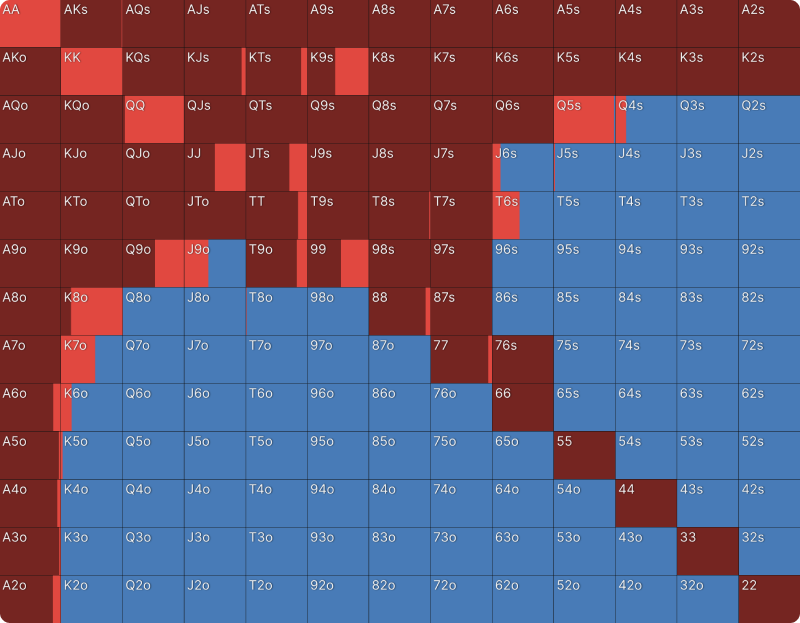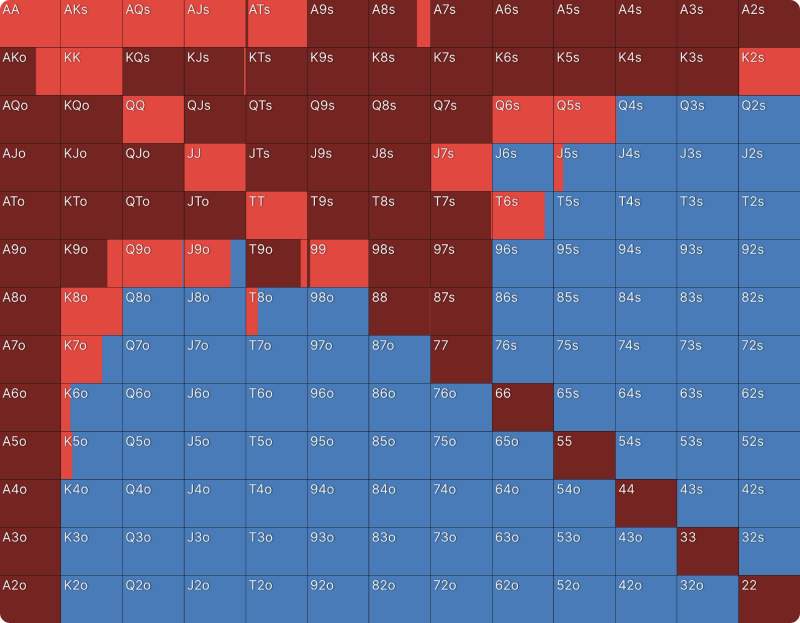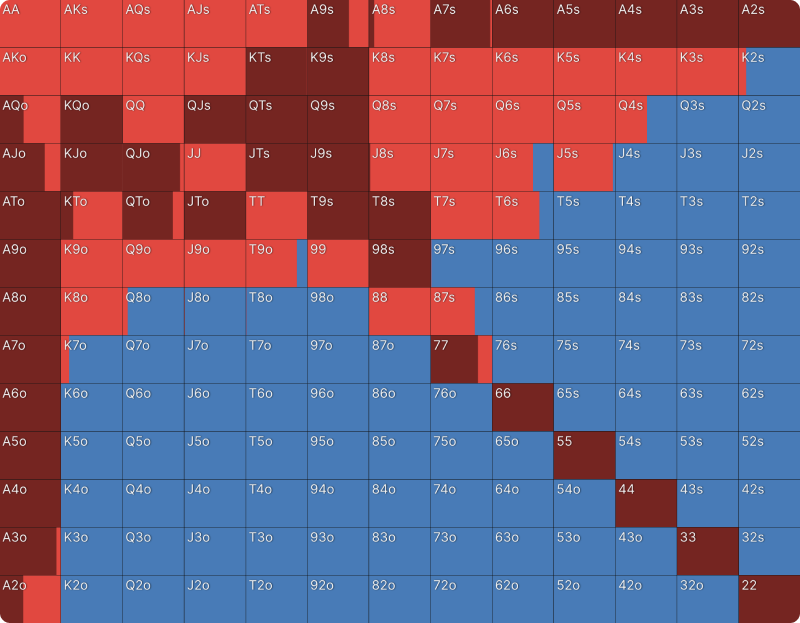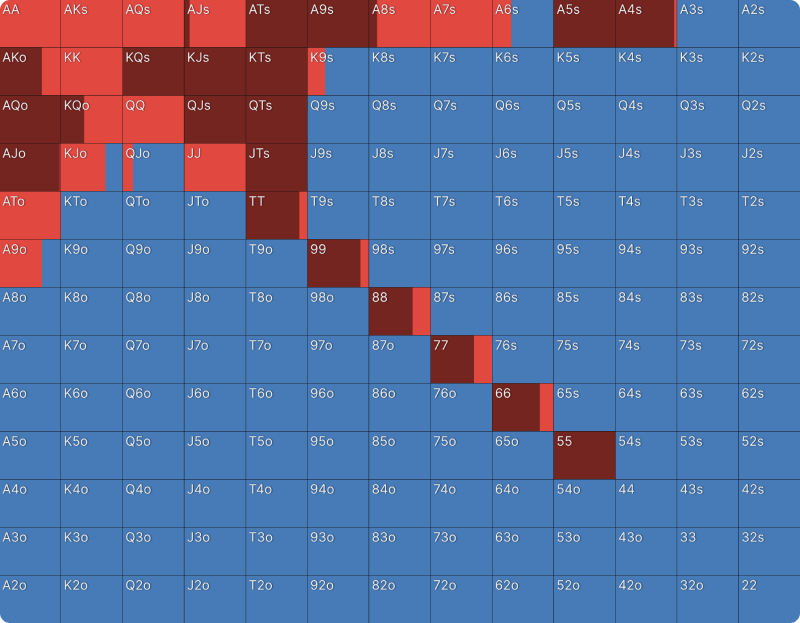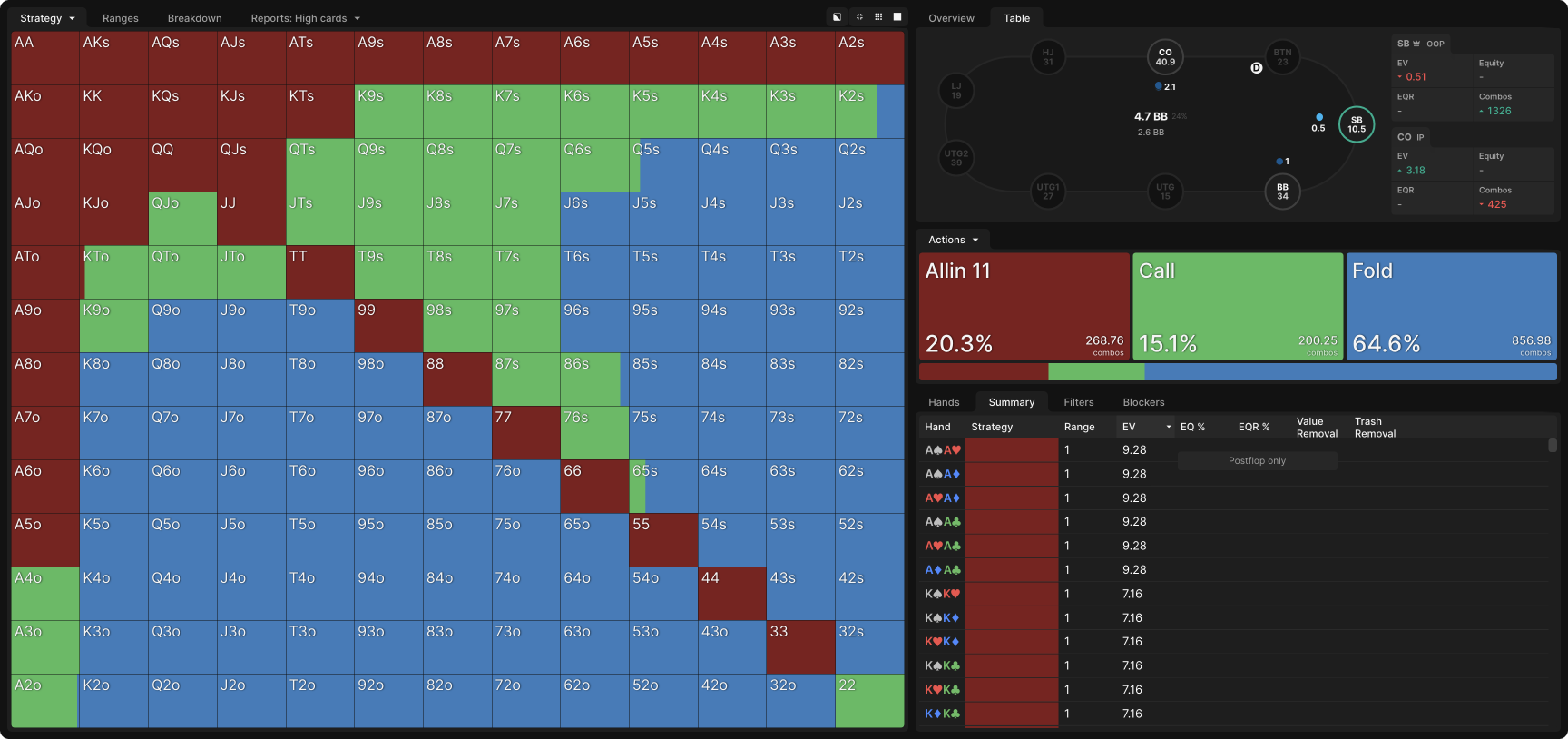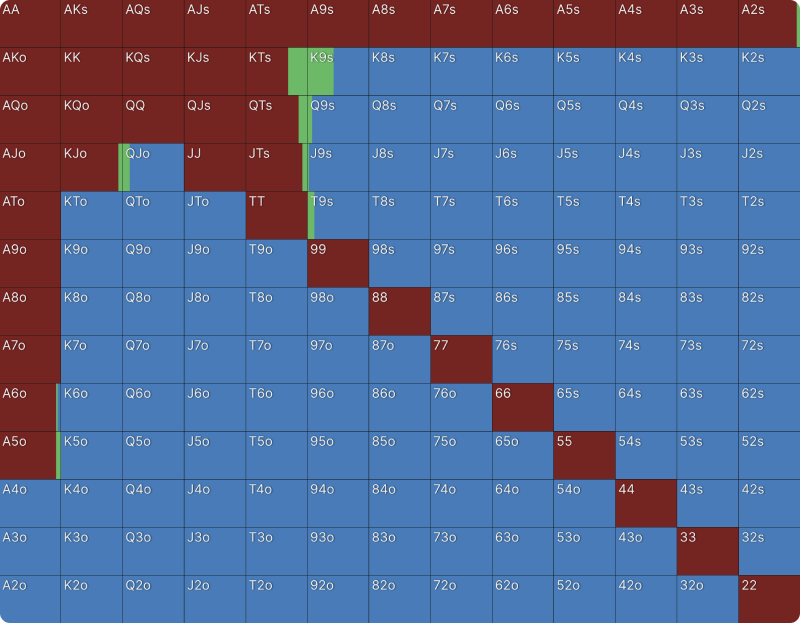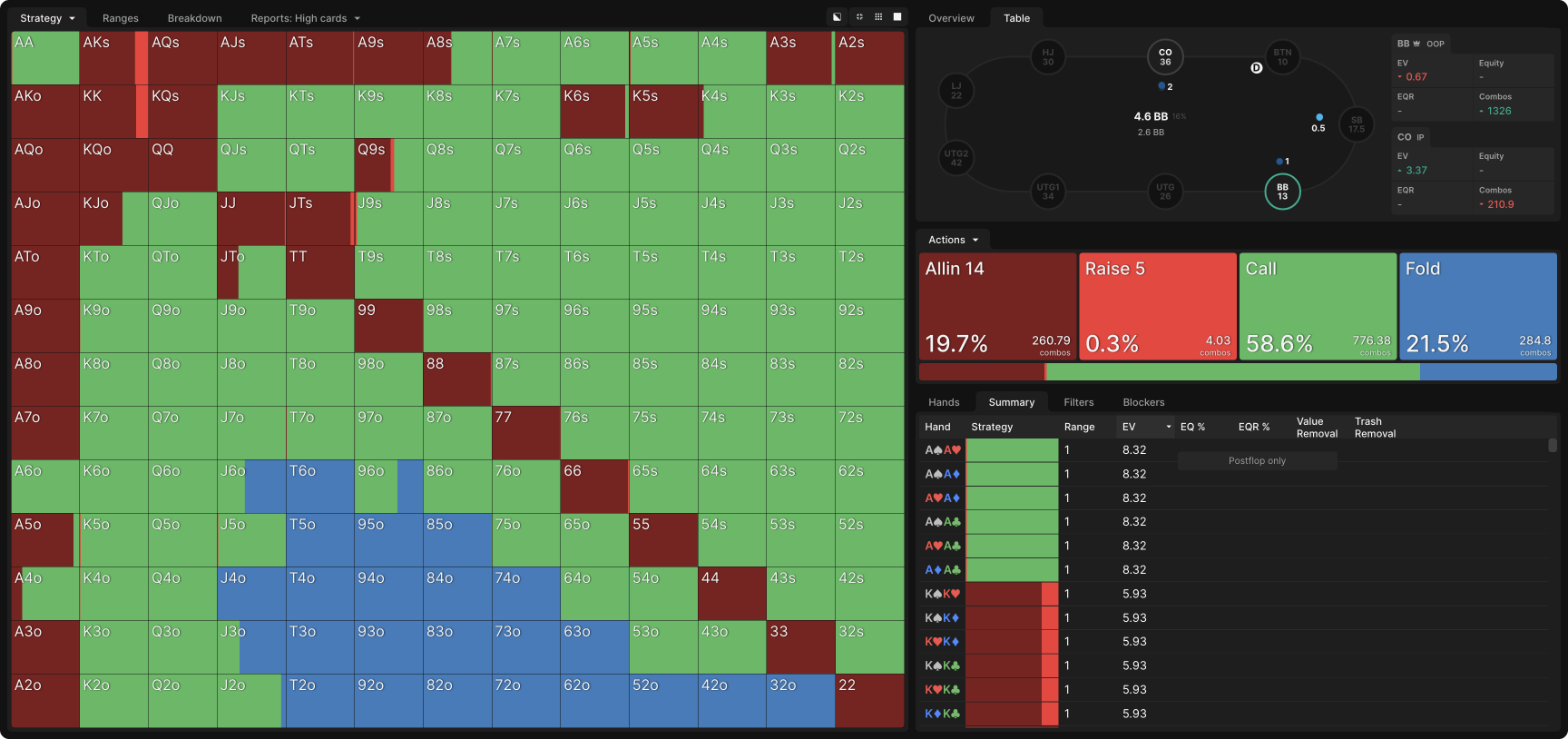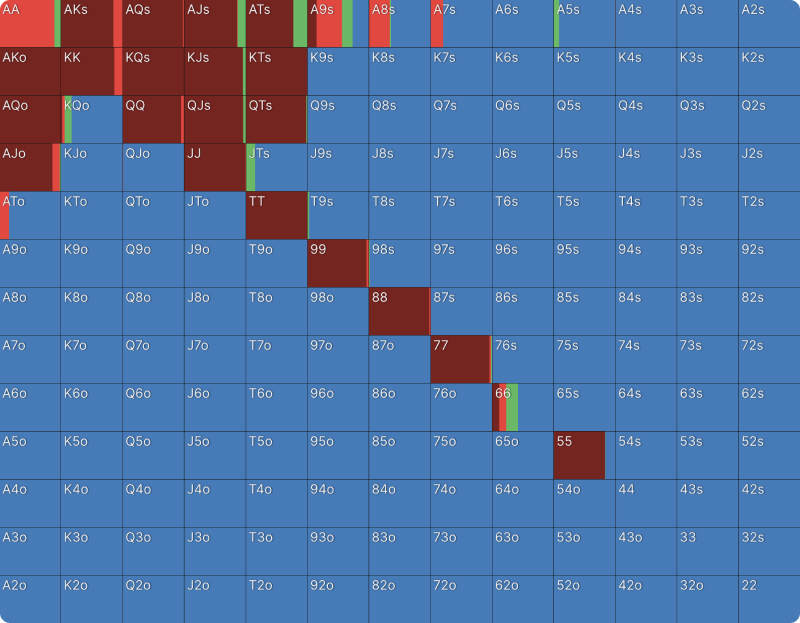Short-Stacked Play in MTTs

Playing a short stack well is an essential tournament skill. It is extremely rare to win a tournament by going wire-to-wire as one of the chip leaders. Indeed, if you late register the tournament, as is often advisable due to the ICM benefits, you will come out of the gate short-stacked. No matter how well you play, no matter how well you ultimately do in the tournament, it is likely you will play a significant portion of it as a short stack, under some degree of ICM pressure.
In a poker tournament, the last of your chips is the most valuable, so you cannot afford to get frustrated or desperate. You may be short due to any number of frustrating factors: a cold deck, a bad beat, or even a mistake on your own part. It doesn’t matter. That’s all in the past now. You must make the best of the current decision, and that means investing your few remaining chips in the most profitable way, taking the appropriate risks to give yourself the best possible chance of cashing and then running up a stack.
The Good News About Having a Short Stack
The first bit of good news is that your chips are worth more than those of your opponents. That doesn’t mean your stack is worth more – they have more chips than you do – but one of your individual chips is worth more than one of theirs.
This is because of how tournament payouts work. You can win a prize no matter how few chips you have, but you can’t win all the prizes even if you have all the chips.
As long as you have one chip, you’re in contention. Each chip you add to your stack after that is worth less than the ones you already had. When half the remaining field is going to make the money (25% or so of the initial field is still in contention), you have a fair chance of locking up a minimum prize, often worth two buy-ins or so, even as a short stack. Much of your strategy should revolve around this short-term goal, as we will discuss later.
As a short stack, it is easy to find opportunities to invest your chips well.
The second bit of good news is that, as a short stack, it is easy to find opportunities to invest your chips well. The blinds and antes guarantee a big reward for the relatively small risk you take on when you put your few remaining chips in jeopardy. The best news is that your short stack enables you to make the most powerful play in poker, guaranteeing full equity realization for yourself while leveraging the larger stacks of players behind you to force them off hands that would otherwise be strong enough to call you.
With such good opportunities available to you, there is no need to get desperate as a short stack. Indeed, you should even consider passing up marginally profitable opportunities in anticipation of better ones to come. The more you fold, the shorter your stack gets, making it even easier to find profitable opportunities later.
The rest of this article will focus on identifying and taking advantage of these opportunities.
The more you fold, the shorter your stack gets, making it even easier to find profitable opportunities later.
Opening Pots
The standard advice for a 10bb stack is to play an all-in or fold strategy, especially from late position. Using a ChipEV model with symmetric stacks, this appears largely correct. Here’s the BTN’s opening strategy when all players have 10bb stacks:
Here’s the BTN’s opening strategy in an ICM scenario with 25% of the field remaining. The BTN has 10bb, SB has 21bb, and BB has 53bb:
Despite the ICM pressure, the BTN’s VPIP is almost identical in both models. In fact, it’s slightly higher in the ICM model, 60.6% vs. 60.1% in the ChipEV model. However, fewer of these are shoves. The ChipEV model shoves 33.9% of hands and min-raises 5.5%, whereas the mixed stack ICM model shoves 30.2% and min-raises 9.7%.
Though not an enormous difference, this reflects a few important strategic principles:
- ICM puts a premium on survival. Because the last of your chips is especially valuable, you have more room to min-raise and get away from a re-raise with hands like J7s, Q6s, and Q9o, which the ChipEV model mostly shoves.
- Having more min-raise-folds enables you to squeeze a little more value out of strong hands like 99 and AQs by min-raising to induce shoves from dominated hands.
- The larger stack in the BB puts additional pressure on the SB. If they had only 10bb, they could shove over your min-raises more easily. But with 21bb, they risk losing a lot more when BB wakes up with a monster. If they call or three-bet small, they enable you to realize more equity with hands that would have folded to a shove and still risk a shove from the BB that would blow them off their equity.
The weakest hands in the ChipEV shoving range play better as min-raise-folds under ICM pressure. A few additional strong hands min-raise to induce.
A similar experiment with a 13bb BTN corroborates these results. The symmetric stack ChipEV model min-raises 13.1% of hands and shoves 25%:
The mixed stack, 25% field ICM model min-raises 18.4% and shoves 20.6%:
The nature of this shift is the same: the weakest hands in the ChipEV shoving range play better as min-raise-folds under ICM pressure. A few additional strong hands min-raise to induce.
With BTN having slightly more chips, a new phenomenon also presents itself. BTN now has some hands – 77, 88, AJo, AQo, ATs, AJs – which raise intending to get all in against one of the blinds but fold if the SB three-bets and the BB shoves. This additional opportunity to fade risk and preserve chips is extra valuable when under ICM pressure.
In early position, ICM models place even more value on the ability to get away from otherwise strong hands if multiple players behind you get involved. A symmetric stack ChipEV model shoves 11.4% and raises 4.2% with 10bb UTG, while a mixed stack, 25% field ICM model shoves 8% and min-raises 7.1%.
Understandably, many players hate the idea of folding after committing 20% of their chips to the pot. It’s essential to see this as an opportunity, not a cost. You can mourn the 20% of your stack you lost, but you should also be grateful for the 80% you still have, which includes your most valuable last chip. As long as you’ve got that one, you’ve got a chance of cashing, or even winning.
Facing Raises in the Blinds
ChipEV models call a lot from the blinds, especially off short stacks. The fewer chips you have, the easier it is to realize your equity after the flop, making it more appealing to take advantage of the odds offered by the antes and a small preflop raise.
Here’s a mixed stack ChipEV model for an 11bb SB facing 2.1bb raise from the CO:
Consistently losing a small amount of chips to occasionally win a larger amount is not a good tradeoff in ICM models.
The thing about these pot odds calls is that they are longshots. You expect to lose more than you win, but you’re okay with that because it doesn’t cost you much to see the flop compared to what’s already in the pot.
ICM models discourage longshots. Because chips won are less valuable than chips lost, consistently losing a small amount of chips to occasionally win a larger amount is not such a good tradeoff. Under ICM pressure, you want to win often if you’re going to contest the pot at all, and the best way to do that is to shove. So, an ICM model with similar stacks and 25% of the field remaining virtually never calls from the SB:
There’s not even much of a substitution effect here. The ICM model shoves all the same hands and simply folds the more speculative ones that were pot odds calls under the ChipEV model. From the BB, ignoring pot odds is not an option, even in an ICM model. However, the 25% field ICM model does call less than a ChipEV model, preferring to fold some of the weaker offsuit hands and shove some of the stronger hands that function as “traps” in the ChipEV strategy.
Here’s the ChipEV response to a CO raise with a 14bb stack in the BB:
And here’s the ICM strategy:
The additional folds come mostly from small, offsuit Qx and Jx hands. Where the ChipEV strategy calls with many suited Ax and broadway hands, in part to keep dominated hands in the CO’s range, ICM prefers shoving to take the pot down immediately, at the expense of potentially winning more after the flop. That’s classic ICM logic: better a bird in hand than two in the bush.
Facing a Raise on the Button
A mixed stack ChipEV strategy with 15bb on the BTN involves a fair bit of calling against an early position open: 6.6%, not much less than the 8.5% of hands that shove over the raise:
A comparable ICM model with 25% of the field remaining entails a similar shoving frequency but virtually no calls. Unlike the BB strategy, however, the hands that shove are not the same as in the ChipEV model. With calling off the table, the shoving range is linear, incorporating all the suited broadway hands that call in the ChipEV model:
This is perhaps counter-intuitive, as calling seems like it would be the safer option. Why doesn’t it function like a min-raise, allowing you to get away without committing the last of your chips if the flop is unfavorable?
The problem is that calling gives you no opportunity to win the pot immediately. Thus, it results in losing quite a few pots you would have won by shoving, either because you would have caused your opponent to fold or because you would have won at showdown when all five cards were dealt.
Calling gives you no opportunity to win the pot immediately.
As when these hands called from the BB in our previous experiment, the calls in the ChipEV model are really about trapping, not about playing it safe. Trapping is a risky play that foregoes the guaranteed profit of a shove in hopes of greater profit from keeping dominated hands in the original raiser’s range.
Under ICM pressure, you’d rather win the smaller pot more consistently by shoving and locking up your equity rather than taking on the risk of letting your opponents (yes, plural – a call on the BTN could easily result in an overcall from the BB) improve on the flop or deny you equity with a continuation bet.
Extremely Short Stacks
The one time ChipEV models do not differ much from models with moderate ICM pressure, such as 25% of the field remaining, are when your stack is extremely short. With 4bb, both models exclusively shove or fold. The ChipEV model shoves 30.3% of hands UTG, while the 25% field ICM model shoves 28.2%.
With a stack that short, there isn’t much ICM pressure on you. You don’t have time to wait. You aren’t going to fold into the money, so you have to take the opportunity to accumulate chips when you can. If you get lucky and double up (which will really be closer to a triple up, taking the blinds and antes into account), then there will be more pressure to play conservatively and keep your head above water until you make the money.
Conclusion
A short stack is a powerful, valuable tool in a tournament. As the bubble approaches, you will often find yourself in a tricky spot where you can’t guarantee yourself a min-cash by folding, but you have a fair chance of locking one up if you can keep your head above water. This necessitates calculated risks, avoiding spots that are likely to cost you chips even if they have a positive expectation, and playing aggressively when you do contest pots in order to give yourself the best chance of winning pots.
Learning to leverage your short stack to catch your opponents off guard and put them in tough situations is the key to playing a short stack well. Getting short-stacked is never the goal, but it will happen at some point in most tournaments you play, so you must learn to make the most of your limited options.
Author
Andrew Brokos
Andrew Brokos has been a professional poker player, coach, and author for over 15 years. He co-hosts the Thinking Poker Podcast and is the author of the Play Optimal Poker books, among others.
